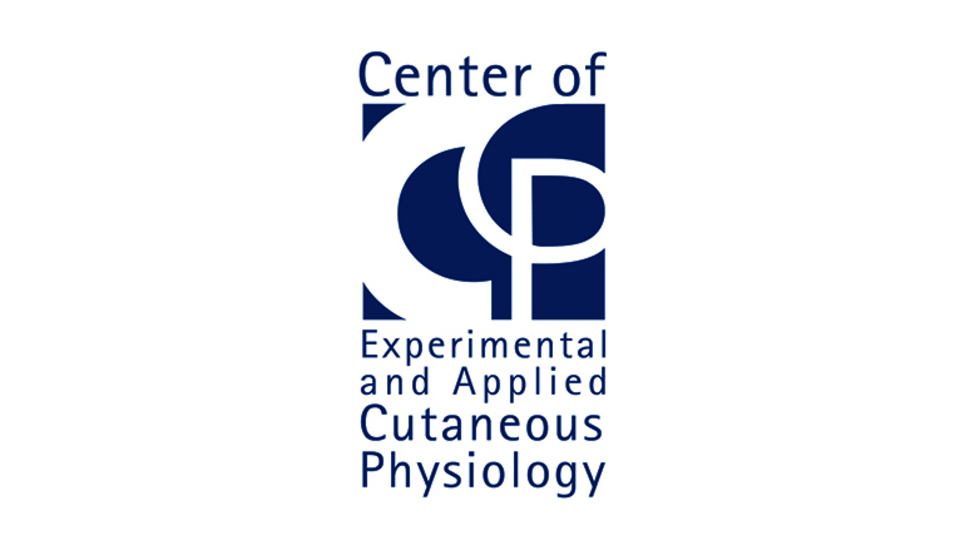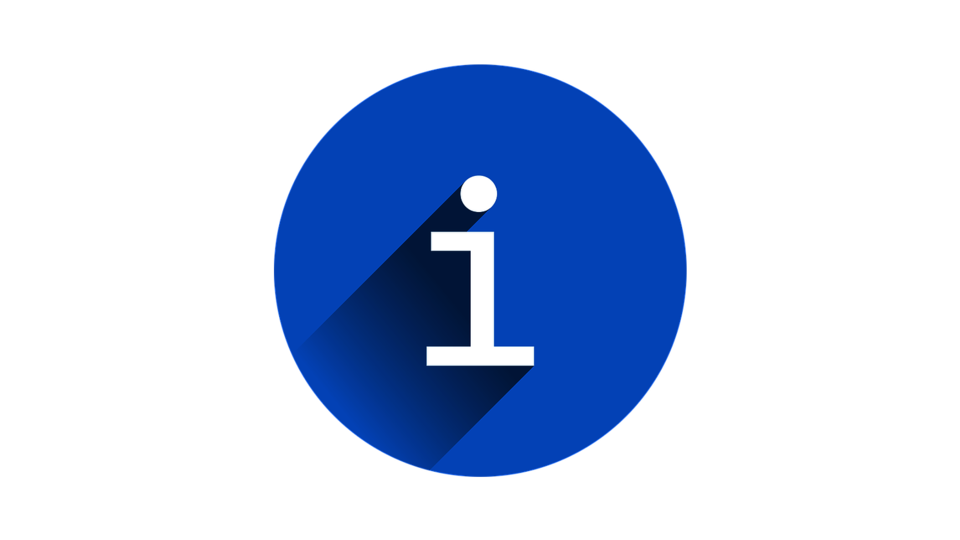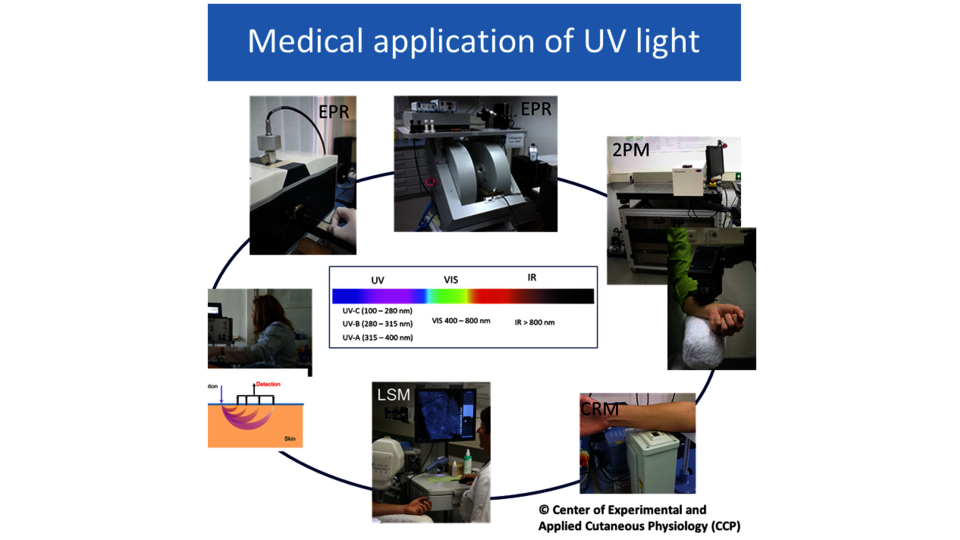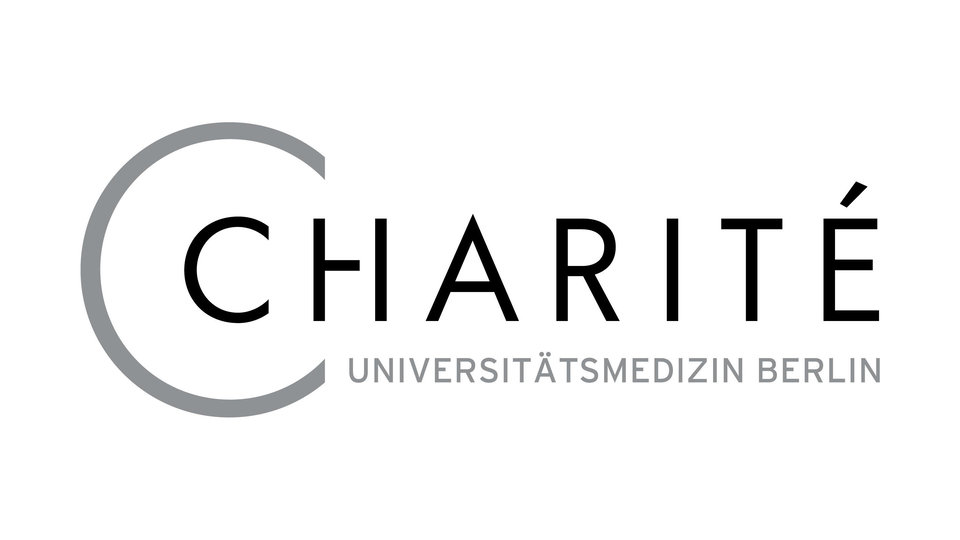Tour 2: Charité – Universitätsmedizin Berlin
Medical applications of UV light

UV and visible light brightens the mood, is important for the production of vitamin D and is also used in phototherapy for the treatment of diseases such as psoriasis. However, with excessive consumption of UV light, the skin, eye and immune system can also suffer: Sunburn, sun allergy, skin cancer and cataracts are diseases in whose development UV light plays an essential role.
Each type of radiation has different effects. The CCP-team is pursuing the development of non-invasive diagnostic methods to detect the effects of light of the entire spectral range and to develop preventive measures.
Therefore, various spectroscopic and microscopic methods are used.
Currently, a miniaturized method for the non-invasive determination of the sun protection factor of sunscreens in human skin is being developed and tested. Here, the UVB and UVA ranges are taken into account. This non-invasive measurement is carried out by detecting the backscattered light, which is directed onto the skin via optical fibers (DRS: diffuse reflectance spectroscopy).
Electron paramagnetic resonance (EPR) spectroscopy can be used to determine radicals in blood and tissue. As part of the "Twenty20 - Partnership for Innovation" program within the Advanced UV for life consortium, EPR measurement methods for skin and blood plasma, using an UVA-LED as a stressor, were developed to determine the redox status and to immediately detect physiological changes in the redox homeostasis.
Far-UVC irradiation which offers the possibility to kill microbes and spare the tissue is investigated for safety ex vivo as well as in vivo in skin, oral mucosa as well as for radical formation, DNA damage, and influence on cell viability.
The penetration depth of UVA-triggerable nanoparticles and the study of the release of disinfectants labeled with fluorescent markers are determined by analyzing LSM images of cryosections containing hair follicles.
More sophisticated non-invasive in vivo applicable optical and spectroscopic devices can be presented, such as two photon microscopy (2PM), laser scanning

- Min. number of participants: 2
- Max. number of participants: 8
- Time & Meetingpoint: Hotel Lobby, 09:00
- Access Requirements:
⇒Wearing an FFP2 mask is mandatory throughout the building.
⇒A Corona rapid test must be present.
⇒An appointment/invitation letter must be presented.
Requirements are subject to change.
Charité – Universitätsmedizin Berlin
Luisenstraße 2
Level 5
10117 Berlin
» Further information on Charité – Universitätsmedizin Berlin.

